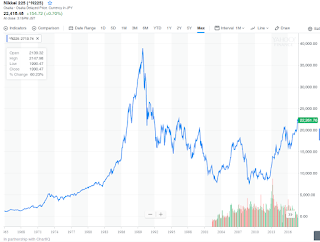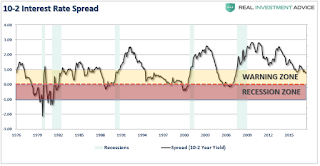Vital Statistics:
|
Last |
Change |
| S&P Futures |
2604.8 |
3.0 |
| Eurostoxx Index |
386.4 |
1.5 |
| Oil (WTI) |
57.6 |
-0.5 |
| US dollar index |
86.5 |
0.0 |
| 10 Year Govt Bond Yield |
2.32% |
|
| Current Coupon Fannie Mae TBA |
102.938 |
|
| Current Coupon Ginnie Mae TBA |
103.75 |
|
| 30 Year Fixed Rate Mortgage |
3.89 |
|
Stocks are up this morning on no real news. Bonds and MBS are up small.
Jerome Powell will testify in front of the Senate today.
Here are his prepared remarks. With respect to monetary policy, he had this to say: "If confirmed, I would strive, along with my colleagues, to support the economy's continued progress toward full recovery. Our aim is to sustain a strong jobs market with
inflation moving gradually up toward our target. We expect interest rates to rise somewhat further and the size of our balance sheet to gradually shrink." He discusses the dual mandate, and his interpretation of that: "
maximum employment, meaning people who want to work either have a job or are likely to find one fairly quickly; and
price stability, meaning inflation is low and stable enough that it need not figure into households' and businesses' economic decisions."
In other words, he is pretty much going to vote to continue the same path of Janet Yellen and Ben Bernanke. He thinks inflation is too low, and we are not yet at full employment. However, we are closer to our goals and therefore it is time to remove some of the emergency measures we took during the crisis. Monetary policy is not going to become more hawkish in any meaningful way.
On the regulatory front, he had this to say: "As a regulator and supervisor of banking institutions, in collaboration with other federal and state agencies, we must help ensure that our financial system remains both stable and efficient. Our financial system is without doubt far stronger and more resilient than it was a decade ago. Our banks have much higher levels of capital and liquid assets, are more aware of the risks they run, and are better able to manage those risks. Even as we have worked to implement improvements, we also have sought to tailor regulation and supervision to the size and risk profile of banks, particularly community institutions. We will continue to consider appropriate ways to ease regulatory burdens while preserving core reforms--strong levels of capital and liquidity, stress testing, and resolution planning--so that banks can provide the credit to families and businesses necessary to sustain a prosperous economy. In doing so, we must be clear and transparent about the principles that are driving our decisions and about the expectations we have for the institutions we regulate."
On this issue, he is probably very close to Yellen, however he is presenting a more business-friendly face. He wants to ease regulatory burdens where appropriate, and to give (hopefully) brighter lines about what the regulators want than previously.
The issue of regulatory transparency falls along two schools of thought. First, the attitude of the Obama administration (and many regulators on the left) is that regulators should disseminate general principles and not specific guidance (bright lines). Their logic is that the financial sector will figure out a way to game the system, so the easiest way to prevent that is to make the lines so blurry that bankers will not approach them. It definitely makes the system safer, however the downside is that compliance officers end up running the banking system. Most bankers refer to compliance as "the business discouragement unit" because the incentives for compliance offers are to focus solely on the downside. It makes banks risk averse and therefore restricts credit.
The attitude of those on the right is that there are diminishing returns to that framework in terms of safety at the expense of credit expansion (and overall economic growth). So their view is to give the banks brighter lines so that the lawyers (who are risk averse) are no longer making the capital allocation decisions. The plus side is higher growth, however the downside is that banks game the system and take too much risk.
I suspect both Yellen and Powell are pretty similar in their regulatory approach, but Powell will probably be a touch more banker-friendly. Of course for the banking sector, the Fed is just one regulator, and they have all the state regulators, plus the CFPB to consider so any change will probably be minor if recognizable at all. So punch line: don't expect to even notice the difference between Powell and Yellen.
In other news, home prices continued to rise in September, with the
FHFA house price index up 0.3% MOM / 6.3% YOY and the Case-Shiller index up 0.5% MOM and 6.2% YOY. While the Pacific and Mountain states continue to experience strong growth, we are seeing a pickup in New England and the Middle Atlantic states. These are the judicial states which still have been still working through their foreclosure inventory.
Inventories fell at both the retail and wholesale level in October, which means Q4 GDP will start off with an inventory drag. Note we will get the second revision to Q3 GDP tomorrow morning.
The Senate continues to work with tax reform.
Here are the 8 Senators who can make or break tax reform and what they are looking for. In one group are the deficit hawks. The CBO estimate is that this will add $1.4 trillion to the national debt, before taking into account any improvement in growth. Some are looking for some sort of trigger that will bump tax rates back up if the revenue is not there. Others worry about the effect tax rate uncertainty will have on corporate behavior. Another group worries that tax reform will benefit large multinational corporations at the expense of small business. And finally, there are the ones that don't support eliminating the individual mandate in Obamacare to fund tax cuts (Collins and McCain). The inability to repeal and replace Obamacare is making tax reform so much more difficult. We'll see what happens, but I suspect we can't thread the needle here.
Morgan Stanley is advising clients to
bet on a yield curve flattening via the 2 year and 10 year spread. Right now the 10 year is trading at 2.32% and the 2 year is at 1.74%. They are forecasting that the difference in yields (currently 58 basis points) will go to 0 next year. Continued demand from global central banks will support demand for government debt to begin with, and if growth comes in stronger than expected, short rates will increase faster. If growth comes in lower than expected, then demand for duration will keep the 10 year yield low. Note this strategist at Morgan Stanley is a huge bond bull, and was calling for a 1% 10 year bond in 2016 before the surprise election of Donald Trump destroyed that forecast.









